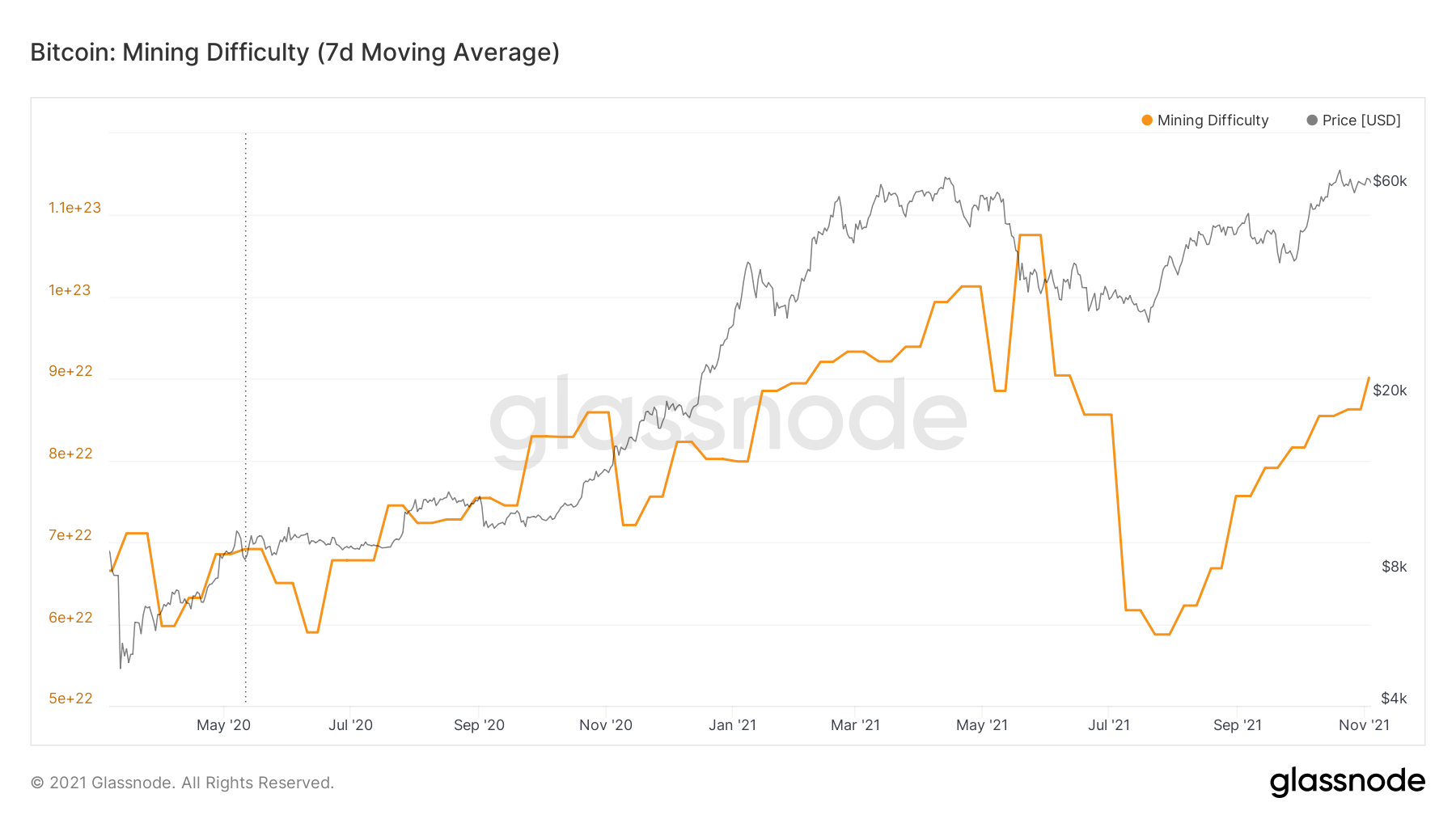BeInCrypto takes a look at on-chain indicators that relate to mining, in order to see if the great miner migration has had any lasting effects.
The mean block interval measures how long it takes to mine a block. The indicator usually hovers between 500 and 600 seconds. Upward or downward spikes are often corrected by a decrease or increase in mining difficulty.
There was a sharp spike on June 26, in which the indicator showed a value of 1,033 seconds. This coincided with the aforementioned migration.
However, the indicator returned to its usual levels between 500 and 600 seconds. This occurred after the biggest downward difficulty adjustment in history, which occurred directly as a result of the lengthening of the time it takes to mine a block.
Mining difficulty
On-chain analyst @n3ocortex tweeted a mining difficulty chart, stating that the mining difficulty increased for the 8th consecutive time.
The BTC mining difficulty has indeed been increasing since July. The difficulty is defined as the number of hashes that is required to mine a block.
Therefore, since that July 21 spike in mean interval time, which in turn caused difficulty to decrease, the mining difficulty has been moving upwards, and is currently at similar levels to what it was in May.
The increase in difficulty has gone hand in hand with the BTC price increase, which is common. The increase in difficulty neutralizes the mining profitability increase due to an increase in the price of BTC.
Furthermore, the increase in difficulty has gone hand in hand with an increase in the hash rate.
The hash rate is the number of hashes produced per second by miners in the network. It is a measure of the strength of the network.
The higher the computing power of miners, the higher the hash rate.
While the hash rate dropped as a result of the migration, it has been increasing as miners return to the network.
Therefore, these three indicators work in unison. The mining migration caused a sharp fall in the hash rate, which in turn increased the mean interval time, which was then reduced by an increase in difficulty. Afterward, the hash rate increased, alongside the mining difficulty, while the mean interval time stayed the same.
For BeInCrypto’s latest Bitcoin (BTC) analysis, click here.
Disclaimer
In line with the Trust Project guidelines, this price analysis article is for informational purposes only and should not be considered financial or investment advice. BeInCrypto is committed to accurate, unbiased reporting, but market conditions are subject to change without notice. Always conduct your own research and consult with a professional before making any financial decisions. Please note that our Terms and Conditions, Privacy Policy, and Disclaimers have been updated.






